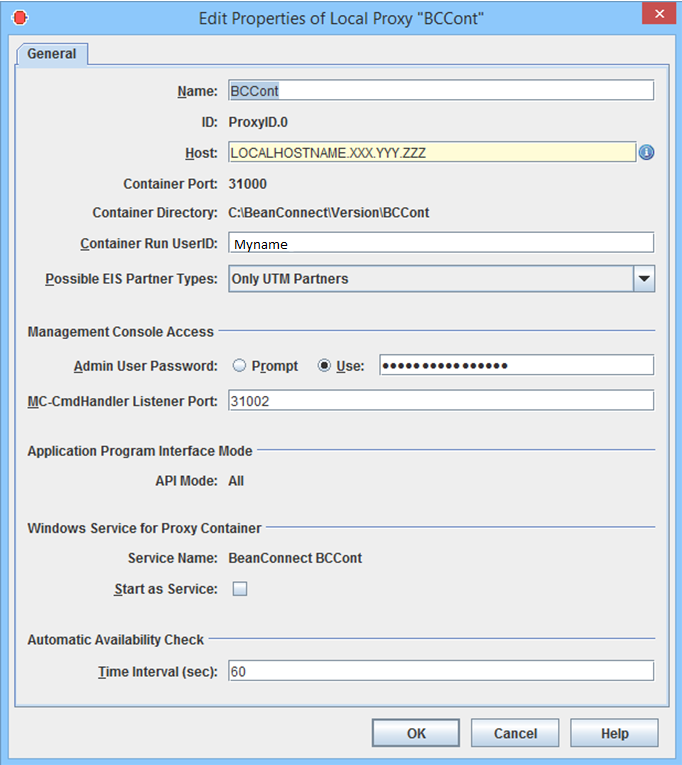The General page contains some general information to allow the Management Console to identify the proxy and access it.
Figure 18: General information on a proxy
Name
Proxy Name. This name is only used internally by the Management Console to distinguish between the managed proxies.
ID
The Management Console assigns an ID to each proxy in the form ProxyID.<number>. This ID is shown in the dialog box after a proxy is added for the first time and cannot be changed. The Management Console uses this ID as a name component for the generated configuration files.
Host
FQDN (full qualified DNS name) (up to a maximum 64 characters in length) or IP address of the host on which the proxy is installed.
Container Port / Container Directory
These fields indicate the proxy's port number and home directory. The port number is specified during installation.
Container Run UserID
User ID under which the proxy container is started. The Management Console compares the user ID specified here with the user ID under which the MC-CmdHandler used for administering the proxy container is running. Only if both user IDs are identical does the Management Console judge that the proxy container can be administered with the MC-CmdHandler used.
In the case of local proxies, please note that in certain situations, e.g. if the proxy container's MC-CmdHandler has not been started and this MC-CmdHandler's listener port has not been assigned to the proxy then the system uses the "internal" MC-CmdHandler which runs in the Management Console process and operates without communications. In this case, the user ID specified here must match the user ID under which the Management Console itself was started.
Possible EIS Partner Types
Specifies the EIS partner type for which the proxy is configured. If you choose Only UTM Partners then the proxy can only communicate with UTM partners. If you choose Only CICS Partners then the proxy can only communicate with CICS partners. Choosing the option UTM and CICS Partners enables communications with both partner types. An additional tab – Proxy Components – is displayed in the case of communication with CICS partners.
Separate licenses must be purchased to communicate with the partner types UTM and CICS.
Management Console Access
Additionally, you must specify the administration password used by the Management Console to access the proxy container and its MC-CmdHandler in the Admin User Password field. Instead of specifying a password you can choose the option Prompt. In this case the password is requested on the first access to any proxy container data within a Management Console session.
The field MC-CmdHandler Listener Port defines the listener port of the MC-CmdHandler used to administer the proxy. The default value is the value in Container Port + 2.
Windows Service for Proxy Container
Only if the proxy container is running on a Windows system: Proxies can also be started as Windows services. To do this, select the option Start as Service. The name to be used to start the proxy as a service is defined during installation and is shown in the field Service Name. If the proxy is operated as a Windows service, it cannot be started in debug mode.
Automatic Availability Check
Finally, you can set the time interval for the automatic availability check in the Time Interval (sec) field. The values you set should not be too small in order to avoid overburdening the Management Console (and the proxies) with availability checks. Values of 180 seconds and higher are recommended.
No automatic availability check is performed if you leave the field empty or enter the value 0.

